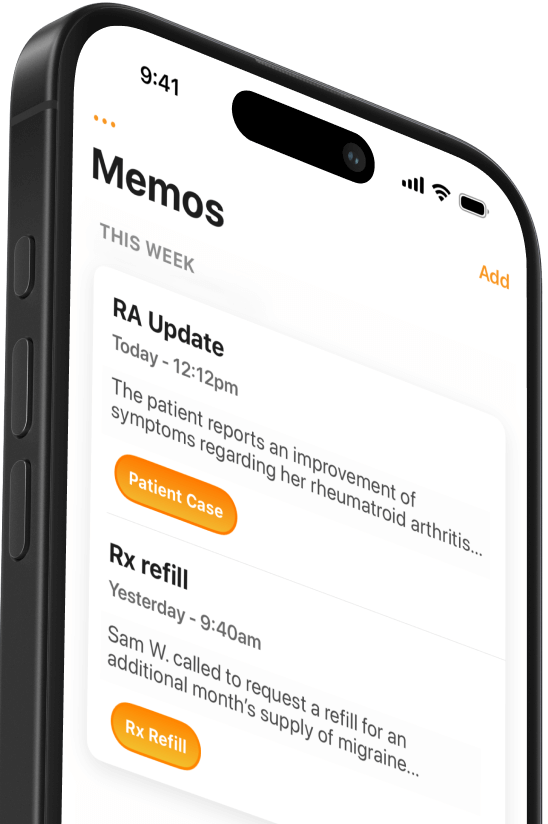How can primary care physicians reduce after hours EHR time?
Physicians report 90 minutes daily of after-hours EHR work. Five solutions include team-based care, sharing tasks, and technology improvements.


Popular articles
Physicians are spending more time than ever documenting patient encounters in the electronic health record (EHR). While digital documentation can create efficiencies, for many providers it's a source of stress. With heavy documentation loads and long workdays, many family doctors finish clinical notes at home. So how can busy physicians reduce after hours EHR time?
EHR time by the numbers
In the past few years many doctors are spending up to six hours in the EHR daily. One study from the University of Wisconsin found that the average family physician completed nearly 90 minutes of that EHR time after hours.Another 2020 synthesis - covering over 100 million patient encounters by 155,000 physicians - breaks EHR time into specific tasks. The study found that the average participant spent over 16 minutes in the EHR for each patient encounter. Doctors spent the most time on chart review (33%), documentation (24%) and ordering (17%).
As a physician, you probably aren’t shocked by these findings. But you probably do feel the impact of EHRs on your professional satisfaction and work-life balance. Surveys report that up to 78% of physicians suffer. And when asked about burnout, doctors say "too many bureaucratic tasks" is the biggest contributing factor. Not far behind is the "increasing computerization of practice (EHRs)."
How to reduce after hours EHR time
Authors of the Wisconsin study suggest five solutions for primary care physicians spending late nights with the EHR. Each requires teams to take thoughtful new approaches to documentation:
- Proactive planned care
- Team-based care that includes expanded rooming protocols, standing orders, and panel management
- Sharing of clerical tasks, including documentation, order entry, and prescription management
- Verbal communication and shared inbox work
- Improved team function
These solutions follow naturally from the study’s finding that two-thirds of physician computer time was allocated to clerical and inbox work. As the authors write, these types of EHR-related tasks “could be delegated, thereby reducing workload, improving professional satisfaction, and reducing burnout."
Physicians can also reduce after hours EHR time with a range of technology solutions and other creative approaches to documentation.
Technology solutions
Jane Fogg is chair of internal medicine and population health at Atrius Health in Newton, Massachusetts. As Fogg told Physicians Practice, Atrius found that minor technology and workflow changes created real efficiencies for their doctors.
For example, in many EHR systems physicians receive lots of information in their inbox. Messages include everything from patient questions, referral requests, and updates from specialists.
Some of these messages require attention. But others simply inform doctors that a patient’s status hasn't changed. Realizing that doctors spend hours in their inbox each day, Fogg worked with the heads of clinical departments to make a change. Going forward, primary-care physicians only got updates if there was a negative result or a significant medication change for their patients.
Atrius Health also found that primary care doctors were getting too many notifications for each patient visit. They re-designed their system to consolidate these notifications into a single dashboard where physicians can go to check a patient’s status.
These types of simple technology solutions can minimize time with the EHR and make more efficient use of physicians’ time. While doctors should pursue ongoing training in their chosen EHR system, they also need support from practices to be more efficient.
Real-time documentation
Dr. Mark Casillas is an orthopedic surgeon who has embraced automated dictation at his practice in San Antonio. Casillas uses Mobius Scribe, a medical-grade dictation software, to dictate notes on his iPhone. Scribe immediately syncs with the EHR, so Casillas completes most of his clinical documentation during the patient encounter.
“I like dictating the history, physical exam and my plan in front of the patient,” Casillas explains. "I can pause and ask the patient, ‘Is there anything I should have added or emphasized?’ They like to hear that I can dictate everything, and for me it’s a matter of convenience that it’s all documented immediately.”
Realtime documentation is one example of how physicians are getting creative with their EHR. This type of creativity - combined with organizational and technology changes - is one way for many family doctors to reduce after hours EHR time.
Related Articles


We Get Doctors Home on Time.
Contact us
We proudly offer enterprise-ready solutions for large clinical practices and hospitals.
Whether you’re looking for a universal dictation platform or want to improve the documentation efficiency of your workforce, we’re here to help.




